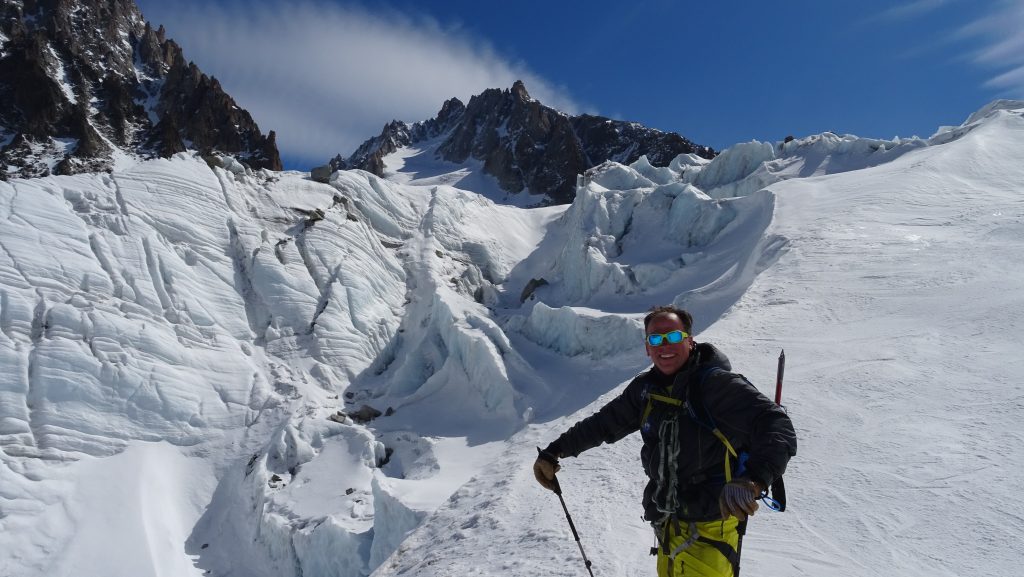Cracking the calculus of snowmelt
Mathematics alum, Tom Painter, cracked the calculus of snowmelt to predict the amount of water in snowpack, helping municipalities plan for more efficient water use.
During college, Tom Painter’s two passions, mathematics and skiing, seemed to be opposing forces. He dropped out of his mathematics degree at Colorado State University, twice, to live in the mountains and ski nearly every day – but he always found his way back to Fort Collins. After a few career twists and turns, Painter’s two passions came together in the field of snow science, first at the NASA Jet Propulsion Laboratory in Pasadena, California, and then, more recently, through founding his own company.
Accurate snowmelt predictions have the potential for huge impact. Approximately 2 billion people around the world rely on annual runoff as a vital source of water; this water source has the potential to decrease by 67% in the next century. In the coming years, Painter plans to expand his business globally.
“In the past, before accurate predictions, water managers would have to make important decisions before knowing the amount of water that would come from snowmelt. Predictions could be up to 50% off, causing massive amounts of water loss,” said Painter. “Our technology changed everything for them because now they can know by late March how much water they would get from the snowpack.”

Trust the science
Painter started Airborne Snow Observatories in 2019 with three co-founders. That year, their models predicted that snowmelt would lead to flooding in California’s Kings River Basin. Their estimates were well above the state’s estimates at the time; however, the local water manager trusted the science Painter and his colleagues presented. The manager adjusted plans and released water from the reservoir ahead of the snowmelt-driven flood to create space for the oncoming water.
And it worked. In total, 100,000 acre-feet of water were kept within the system that otherwise would have run off into the ocean due to lack of storage space. The surplus water collected equaled $100 million of value for the water system and its stakeholders.
Water managers are excited about the impacts of this new technology.
“I have been working in water management for 30 years, and the technology that we have used over that time has largely remained the same,” said Wes Monier, Turlock Irrigation District chief hydrologist. “The new process with Airborne Snow Observatories is a fundamental shift in technology that allows us to accurately measure the watershed across an entire mountain basin. The value of this is immense.”
Painter, whose late father, Richard, taught at CSU for nearly 50 years, credits his success to his mathematics education at CSU.
“Everything that I do is somehow involving the education and growing up that I had at CSU and, in particular, in the math department in the College of Natural Sciences,” said Painter, who has worked with a number of people in the fields of engineering and climatology who learned calculus from his father.
Painter is busy with his growing business, but when he slows down, he reflects on how he got here.
“When I get a chance to sit and think about it, I feel so lucky to have been able to take my two loves and my upbringing and assemble it into something that is of so much value to people.”
Painter is giving back to CSU through a scholarship fund originally set up by his father, the Richard J. Painter Fund for Undergraduate Mathematics Education Endowment.





